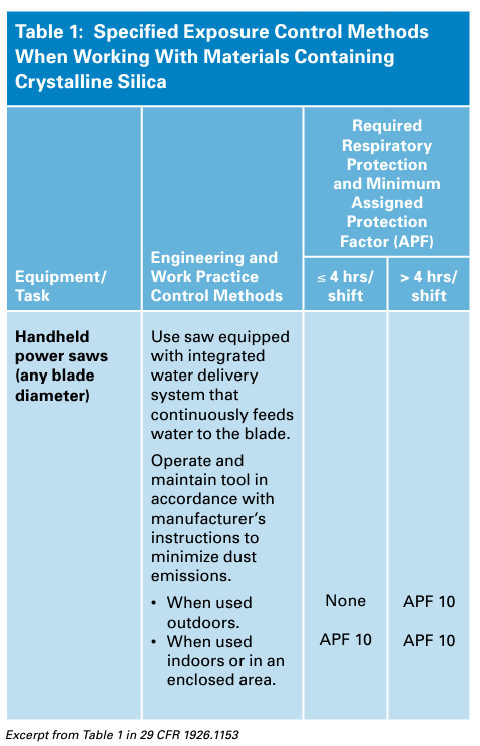More than two million workers in the construction industry have been exposed to silica in the workplace. Respirable Crystalline Silica (RCS), when inhaled, is the leading cause of silicosis, a deadly disease that can lie dormant in your body for 10-30 years before you exhibit symptoms.
Short of a complete double lung transplant, silicosis is both a chronic and incurable condition. Which means there is an epidemic of silicosis on the horizon for more than two million U.S. construction workers, if they have been exposed to RSC without proper PPE (personal protective equipment).
Until 2017, that was almost everyone on a site where concrete was being cut, cored, or drilled, bricks and stone were being cut and laid, or granite and marble were being installed.
That means some two million construction workers are currently at real risk of developing this deadly disease. When you add cigarette smoking to RCS, it increases the likelihood of silicosis or related lung diseases by 21%-81%.
“A total of 2,814 deaths occurred during 315,772.9 person-years of follow-up. Significantly elevated mortality from all causes, cardiovascular disease, non-malignant respiratory disease and lung cancer was observed among silica-exposed workers, while elevated mortality from non-malignant respiratory disease and lung cancer was observed among smokers. Combined exposure to silica dust and cigarette smoking elevated the proportion of mortality and accounted for 21.2, 76.0, 35.7 and 81.4% of all causes, non-malignant respiratory disease, cardiovascular disease, and lung cancer, respectively.”
– Environmental Health, Issue 17, May 9, 2018
What are the current standards of jobsite safety to protect against RCS and silicosis?
OSHA, the Occupational Safety & Health Administration, first addressed the growing problem with respirable silica dust and PPE on jobsites in 2016 with 29 C.F.R. 1910§1053. Enforcement of those new regulations began in September of 2017. Those rules required that workers’ RCS exposure be no more than the permissible exposure limit (PEL) of 50 μg/m3 (50 micrograms per cubic meter of air) over an eight-hour TWA (time weighted average). That standard is still in place for construction sites as of 2023.
Further, it is the employer’s (general contractor, owner, etc.) responsibility to monitor employees’ silica exposure over an eight-hour period, and to provide proper PPE (respirators, etc.) to workers who are being exposed above the baseline limit.
How does OSHA’s enhanced enforcement declaration for RCS/Silicosis in 2023 change construction site safety rules?
The short answer is that it doesn’t, really. The enhanced enforcement measures were added to protect those who cut, core, mill, work with, or sell bricks and stone because people who work around materials that produce RCS are not limited to construction sites. Those involved in installing granite countertops, for example, or selling stone and brick to contractors, are also at risk for developing RCS and require PPE and statistical reporting to help keep them safe as well. It does tighten reporting requirements across all industries that require silica exposure, which could provide greater safety for workers.
What is the recommended PPE to protect you from breathing silica dust?
OSHA recommends respirators with an assigned protection factor (APF) of at least 10. These respirators, sometimes called dust masks, are NIOSH-certified (National Institute for Occupational Safety & Health) filtering facepiece respirators and are recommended to be worn whenever anyone is cutting, coring, or drilling cured concrete, stone, bricks, or other material that produces silica dust.
Additionally, when cutting concrete, stone, or other RCS-producing materials, utilizing equipment with an integrated water delivery system is recommended to tamp down the dust before it becomes airborne.
To get a more inclusive breakdown of recommendations, see OSHA’s Table 1, here.
How can you keep your jobsite and workers safe when working with concrete?
Regardless of how conscientious a general contractor, company, or individual is about safeguarding against silicosis, when more than two million lives are currently at risk and millions more potentially taking on that risk daily, the only answer is consistent, continual, reinforced safety education.



